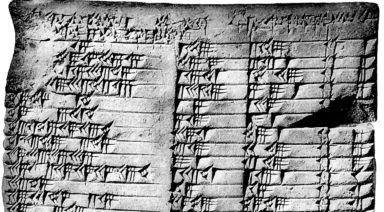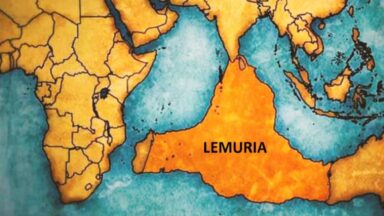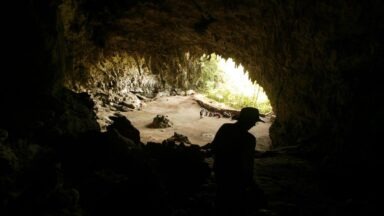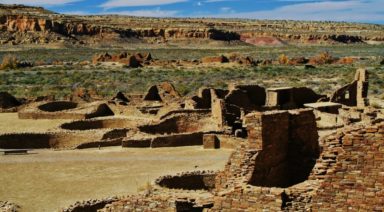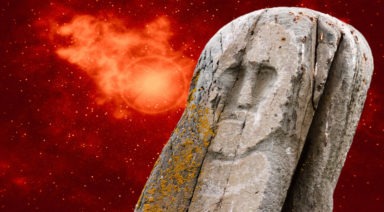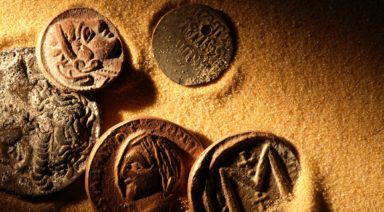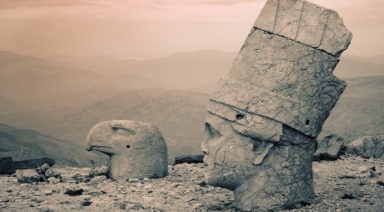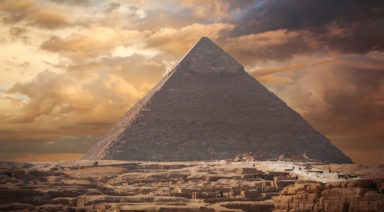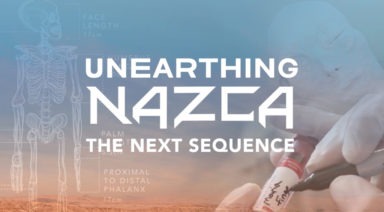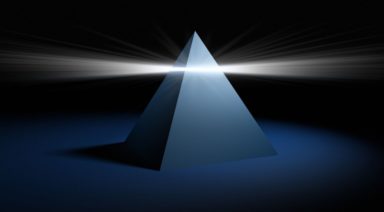Ancient Complex at Karahan Tepe Older than Gobekli Tepe

New discoveries have been made at the ancient site of Karahan Tepe — this sister site of Göbekli Tepe may have just revealed its hidden origins and proved an ancient civilization is even older than once thought.
Archeologists working at the ancient site of Karahan Tepe, about 30 miles east of its sister site Göbekli Tepe, have found stunning carved heads, standing stones, buttresses, and what appear to be snakes prominently carved into the earth. The dig is being led by the University of Instanbul and in their official report point out that, not only are these and other neolithic structures the beginning of architecture but also held a symbolic purpose. Writing, “[T]hey also bear traces of the conceptual transformation of the space. It is during this period when the building was instilled to mean something other than a space to live in, whereby the construction of the first shelters was followed by that of ‘special structures.'”
Science and history writer Andrew Collins, has visited and studied Karahan Tepe since 2004 and has seen these special structures up close.
“The main structures were all what they call ‘subterranean,’ they would cut deep down into the bedrock. One was a huge elliptical stone enclosure,” Collins said. “Clearly, this was an amphitheater for ceremonial ritual activity. Yet this connected via a hole that is 70 cm in diameter into a very strange room containing 11 stone pillars, ten of which are actually carved out of the bedrock itself, and sticking out of the wall of this room that I call the Pillar Shrine, is this elongated neck with a head on the end of it — this carved stone head. This confined room is somewhere initiates or people looking for connection or communication with some kind of otherworldly force or influence or diety would come to do their attunement in altered states of consciousness.”
What can we learn from the detailed subterranean carvings and the positioning of the structures?
“From what we can see at Karahan Tepe and the method of construction and design is we’re dealing with a mentality, a mindset, that is already very sophisticated in its ideas of what it wants to achieve. We have found that there are astronomical alignments associated with these new discoveries at Karahan Tepe. For instance, the large elliptical enclosure is connected with the so-called Pillar Shrine, and the actual alignment between those two takes you to another hill locally called Keçili Tepe, this alignment will take you directly to where the bright star Deneb, in the constellation of Cygnus, also known as the Northern Cross, would set down. And with the same position as Cygnus is the Milky Way that would be seen rising up into the sky at that moment,” Collins said.
“These alignments tell us that this focus toward the Milky Way, the place of souls, the place of the dead, the place of the afterlife is suggesting that they were perhaps drawing across from that other hill to Karahan, some kind of energy associated with the ancestors. It suggests that we are dealing with a culture that knew what they wanted to do, they knew what they wanted to achieve by creating a complex like this.”
Göbekli Tepe, discovered in 1994, was considered by many mainstream archeologists to be a one-off that should not have existed but did only as an anomaly. Andrew Collins and others have argued for years, this was part of an older, lost civilization.
“The biggest takeaway that we can take from Karahan Tepe and the excavations going on there now is that Göbekli Tepe was not simply an anomaly. Karahan Tepe shows us that we are dealing with a high culture that existed as early as 11,500 years ago,” Collins said.
We’ve barely scratched the surface at Karahan Tepe, but what can we infer from what we have learned so far?
“We’re on a learning curve with Karahan Tepe now. What’s very clear so far is that they were working toward some premeditated design. I strongly believe that’s got something to do with understanding what we would call the ‘cosmic source,’ the force that manipulates nature, that creates life. And it’s something that shamans, initiates, aspirants would achieve during altered states of consciousness, during what we’d call death trances. And I think that they recognized something when in these states that they needed to know more about. We know that the serpent is the symbol of cosmic knowledge, of cosmic wisdom, and that is, to me, the best evidence so far that we have so far to suggest that this is correct, that the builders of Karahan Tepe were looking for the ultimate cosmic knowledge,” Collins said.
More discoveries are being made at Karahan Tepe almost every day.
The Book of Enoch Might Tell a Different Story of the Pyramids

Biblical stories are often fantastical, unbelievable, and sometimes confusing when it comes to interpreting their meaning. Of the apocryphal biblical texts, there are few more enigmatic and fascinating than the Book of Enoch, and in certain sects of Christianity, these books are still part of the dominant biblical canon. But could clues from these texts provide evidence of a completely different story of our ancient ancestors, namely one involving visits from an advanced extraterrestrial race?
Giants in the Book of Enoch
When the Book of Enoch was found in the Dead Sea Scrolls, it became clear it was a piece of literature that influenced biblical writers of the time including those who wrote the New Testament. So why is the Book of Enoch not in the Bible?
Today the Book of Enoch is only included in the main canons of Ethiopian Orthodox sects but was popular for hundreds of years in ancient Jewish perspectives. In fact, in understanding the Book of Enoch, some have pointed out that it was likely the inspiration for the Book of Genesis, due to a number of parallels.
Within the book, we find the story of Enoch who was the father of Methuselah and grandfather of Noah. He lived for 365 years up until the great flood that wiped out much of the population. Enoch was taken away in a fiery chariot before the great floods by the Archangel Michael, who some have interpreted as being extraterrestrial. Could that fiery chariot actually have been a spacecraft powered by a jet-engine?
The book that details the story of Enoch is extensive with over 100 chapters dispersed throughout several books, detailing accounts of the Nephilim and the Watchers. These giants, known as the Nephilim, are also described in the Book of Genesis. The giants are said to have been the progeny of angels, known as The Watchers, and female humans.

The ancient astronaut view of these biblical stories sees these Watchers as an advanced extraterrestrial race, who were perceived as angels, some good and some bad. Their presence among our human ancestors is thought to be either the reason we exist on this planet — the extraterrestrials being our progenitors — or the reason we advanced rapidly as beings capable of starting complex civilizations.
Some point to a particular passage that describes an account from Enoch’s grandson, Lamech, during the birth of his son, which read:
“And his father, Lamech, was afraid of him and fled, and come to his father Methuselah. And he said to him: ‘I have begotten a strange son, different and unlike man, and resembling the sons of the God of heaven; and his nature is different and he is not like us, and his eyes are as the rays of the sun, and his face is glorious.”
This was a description of Noah who would later go on to build the ark and survive the flood, sent to wipe out the Nephilim and cleanse humanity of its impurities.
But what was Enoch’s relationship with the Nephilim and the gods who created them? Enoch’s grandson was chosen to build the Ark to survive the flood, while Enoch himself was taken away by the “angels.” Could Enoch have left behind any clues for humanity that could have survived the flood? Some point to the ancient pyramids in Egypt as the answer.
The Book of Enoch and The Ancient Sumerians
There is some crossover in the biblical texts of Enoch and ancient Sumerian texts, particularly when it comes to the Watchers. Known as the Annunaki, or visitors from a planet called Nibiru, the Sumerians also looked upon these Watchers as gods, showing a crossover between the two ancient cultures. In the Book of Enoch, there is also mention of the great Sumerian ruler Gilgamesh, who often describes the Annunaki in much the same way Enoch describes the Watchers.
Throughout the bible and the Epic of Gilgamesh, the gods often did not like to show their faces and communicated through transmitters where the voice of the gods could be heard, but not seen. Today, we have technology like this, allowing us to speak to people without seeing their face, could they have been referencing something like a telephone or telecom?
Ancient astronaut theories have interpreted this secrecy as extraterrestrials not being able to take off their helmets and having bases on mountains, which were kept hidden from humans. This is a recurring theme in biblical texts and particularly the Epic of Gilgamesh. In fact, in the seventh tablet of the Epic of Gilgamesh, he describes being brought to a door that speaks like a living person — much like the intercoms we’re familiar with today.
The ancient Sumerians also built pyramids of their own, called ziggurats. These ziggurats were places of protection during floods and were also topped with thrones for their gods. Erich von Däniken says he believes that the Egyptian pyramids could have also been built for a similar purpose, protecting something from the great flood of biblical texts.
Like the Epic of Gilgamesh, some believe there to be a lost 10th Sumerian tablet that details how the Annunaki built the pyramids in Egypt, which could draw a definitive connection between these two advanced ancient civilizations and an advanced visitor race.
A False Narrative of the Pyramids
As it turns out, the Great Pyramid at Giza, otherwise known as the Pyramid of Cheops or Khufu, may not have been attributed to the person who ordered its construction. It seems there is actually significant evidence the pyramid was not built by Khufu, and the only reason historians and archeologists date it to the 4th dynasty is due to a questionable discovery by English Egyptologist, Major-General Richard Vyse.
Author and alternative theorist, Zecharia Sitchin, found that there is ample evidence that Vyse, after spending over a million dollars on an expedition into the upper chambers of the Great Pyramid, came up empty-handed and forged the cartouche of Cheops.




